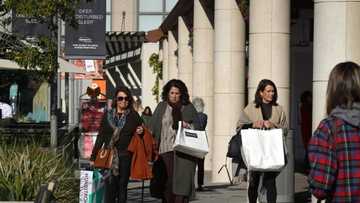US third quarter GDP revised up to 3.2% with help from spending

Source: AFP
PAY ATTENTION: Never miss breaking news – join Briefly News' Telegram channel!
The US economy expanded 3.2 percent in the third quarter, the Commerce Department said Thursday, in a further upward revision of data reflecting stronger consumer spending and investment than earlier estimated.
The world's biggest economy grew for the first time this year in the July to September period, after two quarters of contraction that worsened recession fears.
It earlier revised the GDP figure to 2.9 percent, annualized -- already an improvement from the 2.6 percent first reported in October.
Both adjustments "primarily reflected upward revisions to consumer spending" as well as non-residential fixed investment, the Commerce Department said, in its final GDP estimate for the quarter.
But growth was partly offset by decreases in residential fixed investment and private inventory investment, it added.
Within consumer spending, a rise in services was partly held back by a drop in goods -- sales of cars and auto parts lagged as did food and beverage purchases, as households grappled with soaring costs.
PAY ATTENTION: Follow Briefly News on Twitter and never miss the hottest topics! Find us at @brieflyza!
An increase in government spending was led by upticks in staff compensation and defense spending, the Commerce Department said.
The data also showed that personal consumption expenditures picked up 2.3 percent, markedly higher than the 1.7 percent previously estimated.
But it is unclear how long consumers will be able to keep up the current pace of spending.
'Still spending'
"Despite a rapid increase in interest rates, the economy is growing and importantly, households are still spending," said Rubeela Farooqi of High Frequency Economics in a note.
The Federal Reserve has raised interest rates seven times this year in an attempt to tamp down decades-high inflation, walking a tightrope to try to cool the economy without triggering a recession.
While effects of the higher rates are rippling across sectors, consumer spending has proven more resilient than expected.
But analysts point to signs that households are dipping into their savings, predicting a slower growth path in the future.
"In 2023, we expect a slower growth trajectory," said Farooqi.
"In terms of Fed policy, even as growth slows... a focus on lowering inflation means rates will remain higher for longer next year," she said.
PAY ATTENTION: Сheck out news that is picked exactly for YOU ➡️ find the “Recommended for you” block on the home page and enjoy!
Source: AFP



